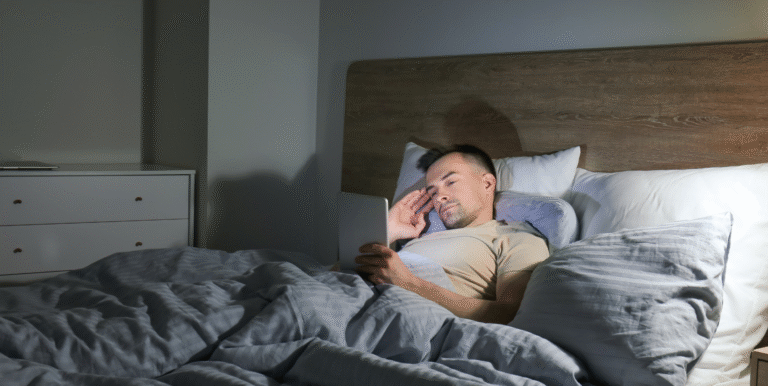Best Cresco Cannabis Strains: Top Reviews

Living with Restless Leg Syndrome, or RLS, can be super frustrating. It often messes with your sleep and makes your legs feel antsy and uncomfortable. RLS gives you this strong urge to move your legs, especially at night, and it often comes with weird, creepy-crawly feelings.
Some people with RLS are curious if cannabis, also known as weed, might help them find some relief. Today, we’re going to talk about some weed strains that users have said help their RLS symptoms. Our goal is to explore what might be the best weed strain restless leg syndrome management, based on what people share and what we know about these plants.
When you’re dealing with something that disrupts your life like RLS, it’s normal to look for all kinds of information. This might include learning about medical cannabis considerations, but always, always with your doctor’s okay and guidance.
Top Weed Strains Explored for Restless Leg Syndrome Symptom Relief
Let’s look at some weed strains that people with RLS have found helpful. Remember, these are based on what users say!
Strain 1: Granddaddy Purple (GDP)
- Type: This is an Indica strain. Indicas are usually very relaxing.
- Key Terpenes: Often Myrcene, Caryophyllene, and Pinene.
- Typical Cannabinoid Profile: High in THC (17-27%), and low in CBD.
- Reported Benefits for RLS Symptoms: People say GDP is great for powerful muscle relaxation. It can reduce that antsy urge to move your legs, help you sleep deeply, and calm those uncomfortable leg sensations.
- Why it’s considered helpful for RLS: Its strong sleepy and muscle-relaxing Indica effects, helped by the terpene Myrcene, make it a favorite for nighttime RLS relief. Many think it could be the best weed strain restless leg syndrome for really bad symptoms.
Strain 2: Northern Lights
- Type: This is also an Indica strain.
- Key Terpenes: You’ll often find Myrcene, Caryophyllene, and Limonene.
- Typical Cannabinoid Profile: High in THC (16-26%), with low CBD.
- Reported Benefits for RLS Symptoms: Northern Lights is known for deep body relaxation. This can ease muscle tightness and twitching. It’s a strong sedative for sleep and can soothe leg discomfort.
- Why it’s considered helpful for RLS: It’s a classic strong Indica. Its heavy, sleepy, and muscle-relaxing effects are what many people look for to calm down RLS at night.
Strain 3: Afghan Kush
- Type: This is a pure Indica, an original type of Indica from a specific place (a landrace strain).
- Key Terpenes: Often Myrcene, Caryophyllene, and Pinene.
- Typical Cannabinoid Profile: Moderate to high in THC (15-21%), with low CBD.
- Reported Benefits for RLS Symptoms: Users report very deep physical sleepiness from this strain. It calms jumpy legs, helps you fall asleep and stay asleep, and reduces physical discomfort.
- Why it’s considered helpful for RLS: Because it’s a pure Indica, it gives those classic heavy-body effects. This is great for trying to stop the physical feelings of RLS.
Strain 4: ACDC
- Type: This is a CBD-dominant Hybrid. That means it has a lot of CBD.
- Key Terpenes: Often Myrcene, Pinene, and Caryophyllene.
- Typical Cannabinoid Profile: Very, very high in CBD (often 15-20% or more!). It has very little THC (usually less than 1-2%).
- Reported Benefits for RLS Symptoms: It might help calm down nerve sensations and reduce any swelling linked to RLS. And it does this without making you feel “high.” It can also help you feel generally calmer.
- Why it’s considered helpful for RLS: The high amount of CBD can soothe your body without the strong head effects of THC. This could be good if you’re sensitive to THC or need some relief during the day without feeling out of it. Some find it a good choice when looking for the best weed strain restless leg syndrome without strong sleepiness.
Strain 5: Harlequin
- Type: This is a Sativa-dominant Hybrid, but it has a good amount of CBD.
- Key Terpenes: Usually Myrcene, Pinene, and Caryophyllene.
- Typical Cannabinoid Profile: It often has a balanced amount of CBD and THC, frequently around a 5-to-2 ratio of CBD to THC.
- Reported Benefits for RLS Symptoms: It can help with uncomfortable sensations and muscle tension while keeping your head clear. The CBD part might help calm down nerve activity.
- Why it’s considered helpful for RLS: The mix of CBD and THC might offer a unique way to deal with RLS discomfort. It doesn’t usually cause the heavy sleepiness of pure Indicas, so it could be useful for early evening or if your RLS symptoms are milder.
Important Considerations When Using Cannabis for RLS
If you are thinking about using weed for RLS symptoms, please keep these very important things in mind:
- Must Consult Your Doctor: We can’t say this enough! RLS is a condition that affects your nerves. Trying to treat it yourself with cannabis without a doctor’s advice is not a good idea.
- Timing of Use: Most strains that might help RLS are best used in the evening or at nighttime because they can make you sleepy.
- Start Low, Go Slow: If you try cannabis, especially Indica strains that are rich in THC, start with a very, very small amount. See how it affects you before trying more.
- Method of Consumption: How you use cannabis can change things. Vaping or smoking might work faster if your legs are really bothering you right now. Edibles take longer to kick in but might last longer through the night (but they are harder to dose right).
- Other Lifestyle Factors: Cannabis is not a magic fix. Your doctor will likely talk to you about good sleep habits, diet, and exercise too.
- Legal Access & Guidance: Know the cannabis laws where you live. For those who are considering this path with their doctor’s approval, understanding how medical marijuana card services work can be an important step for legal access.
- Note: Dealing with RLS can be a nightly battle. If medical cannabis is something you and your doctor decide to explore, getting access shouldn’t be another hurdle. Good to know that options like getting approved for your medical card online in minutes exist.
HealifyNowMMJCards aims to make the approval process quick and straightforward, helping you get the care you might need without extra hassle. You can begin your application now to see if it’s a fit for your situation.
Conclusion: A Hopeful Path Towards Quieter Nights with RLS
To sum up, RLS is definitely a challenging condition. However, some people have shared that certain weed strains help them find relief from the frustrating symptoms.
But please remember, getting a proper diagnosis and a full treatment plan from a doctor is absolutely key for RLS. We hope that with good medical guidance, and maybe with carefully chosen weed strains (if your doctor says it’s okay), people can find their best weed strain restless leg syndrome management strategy and finally get more peaceful, restful nights.





